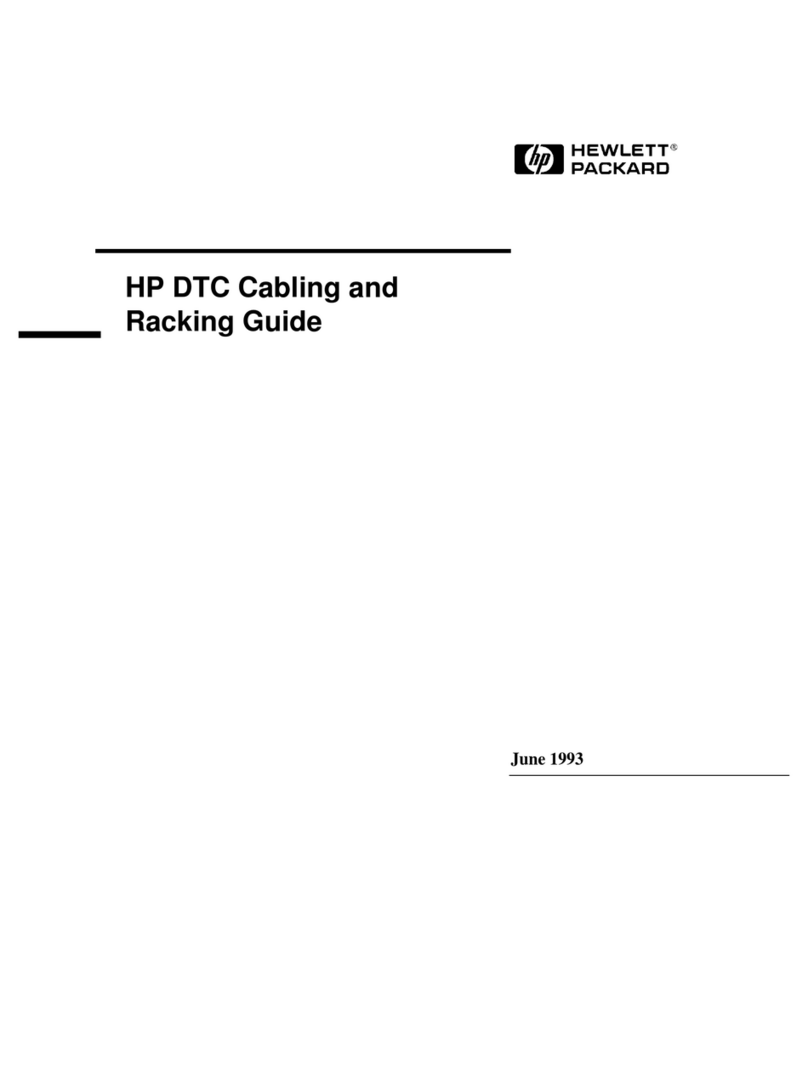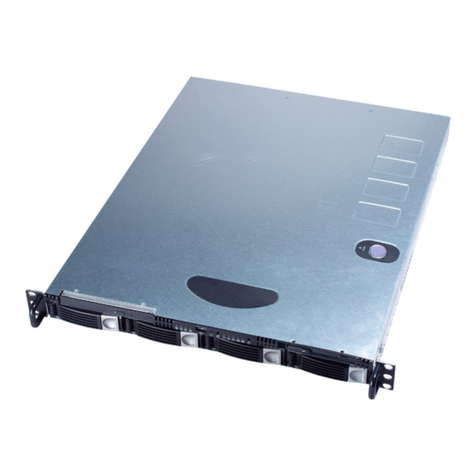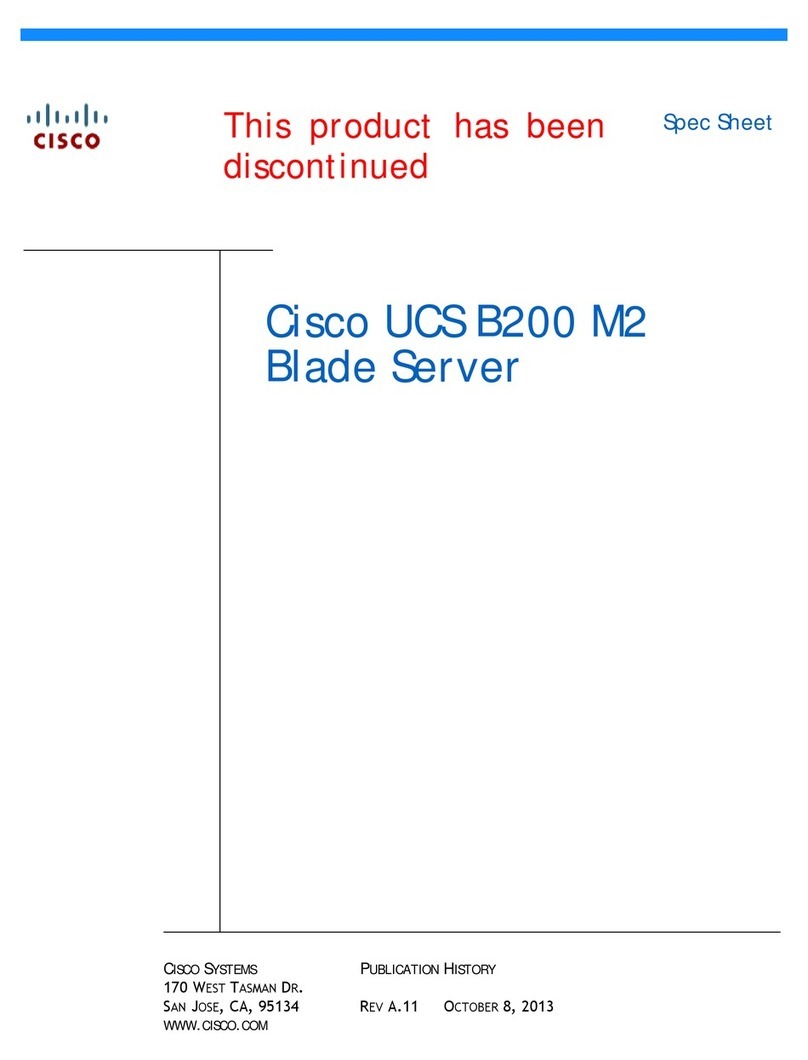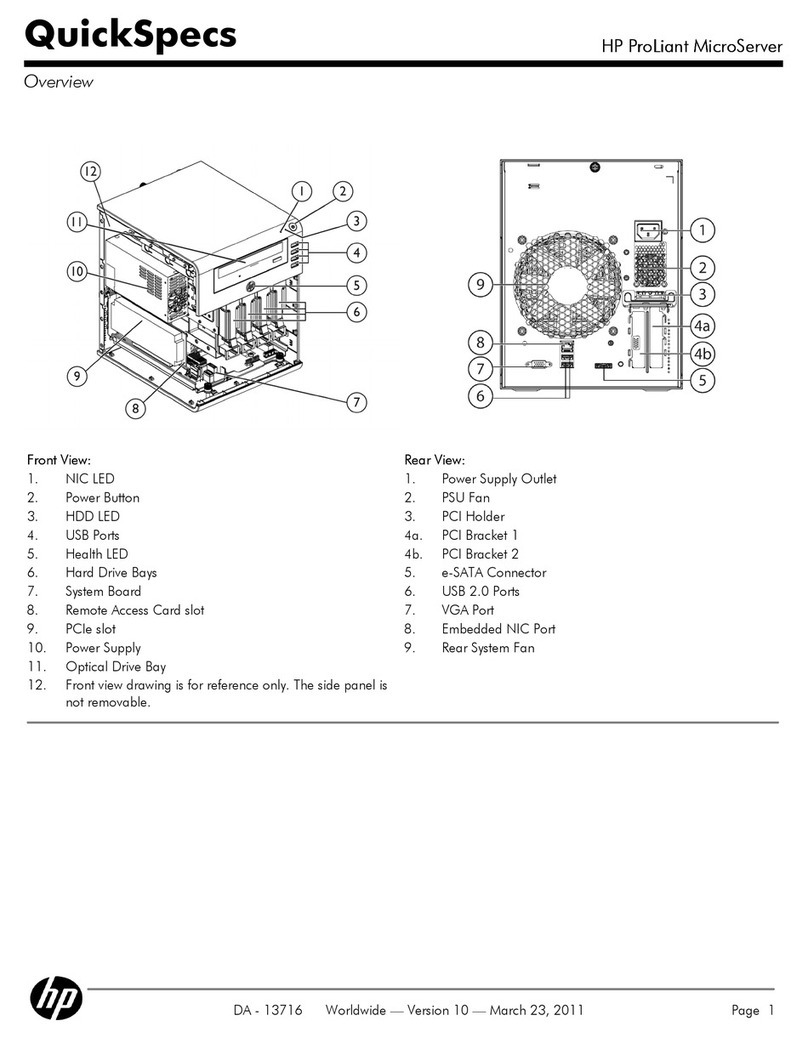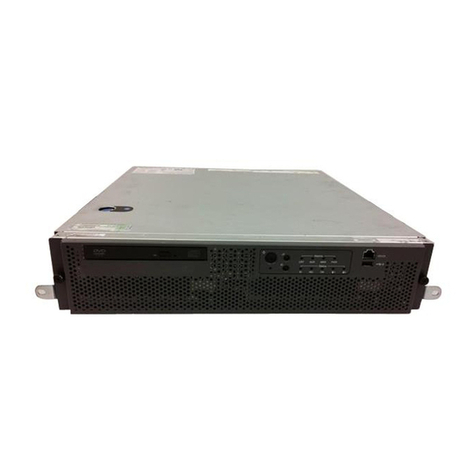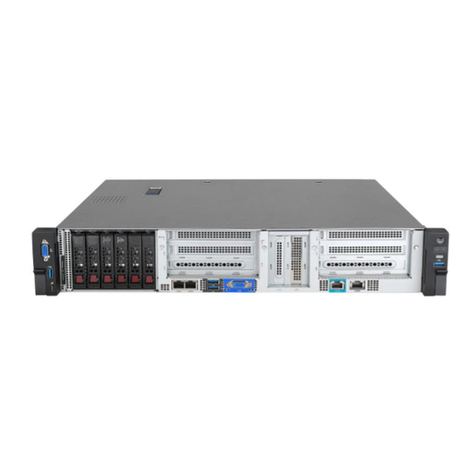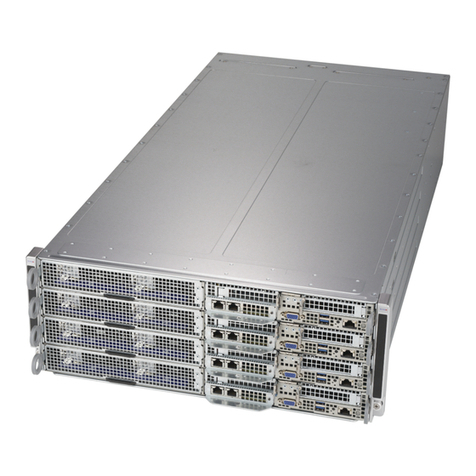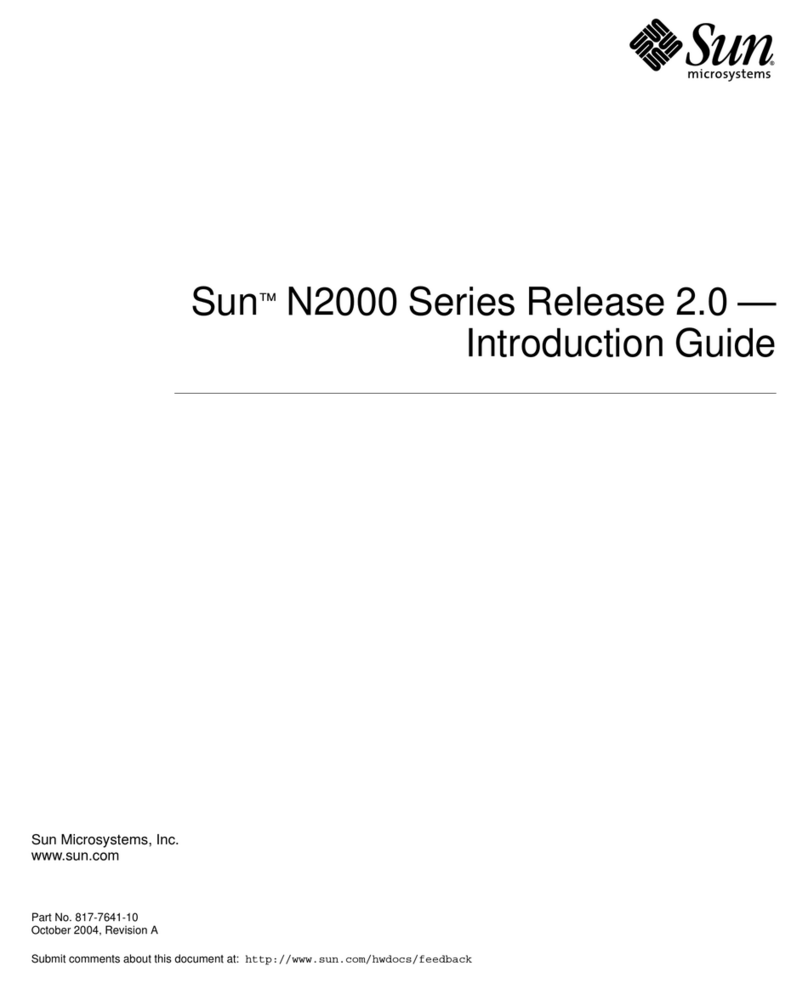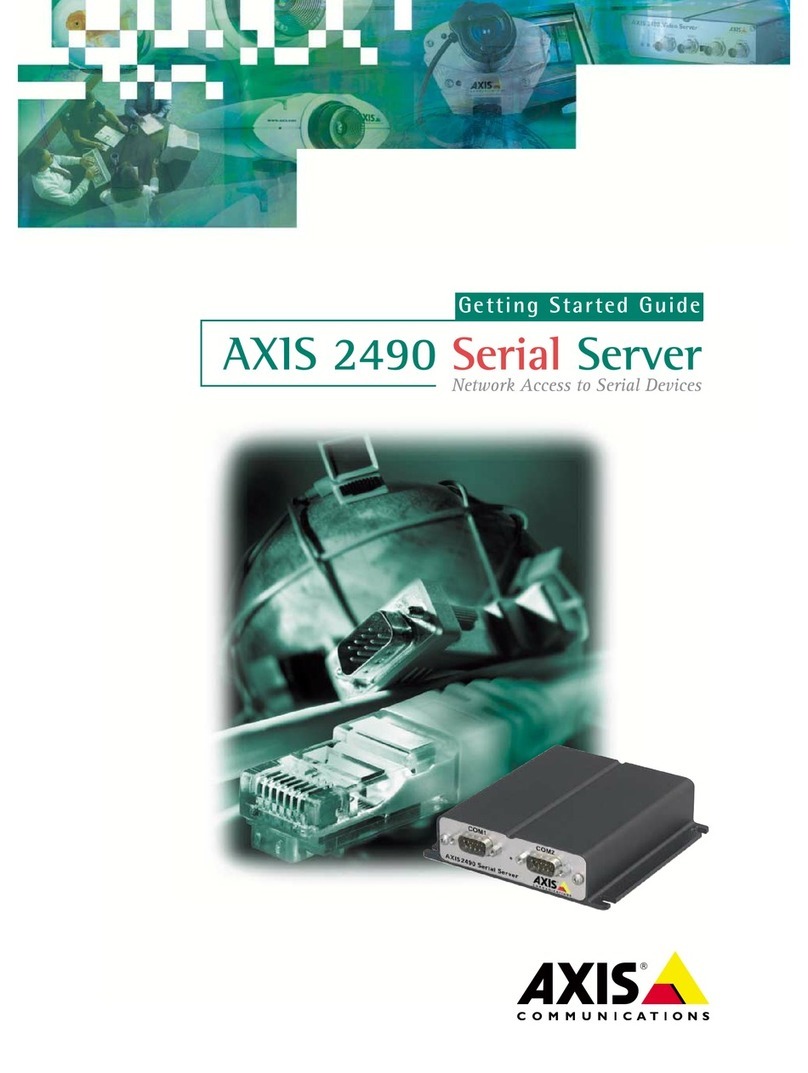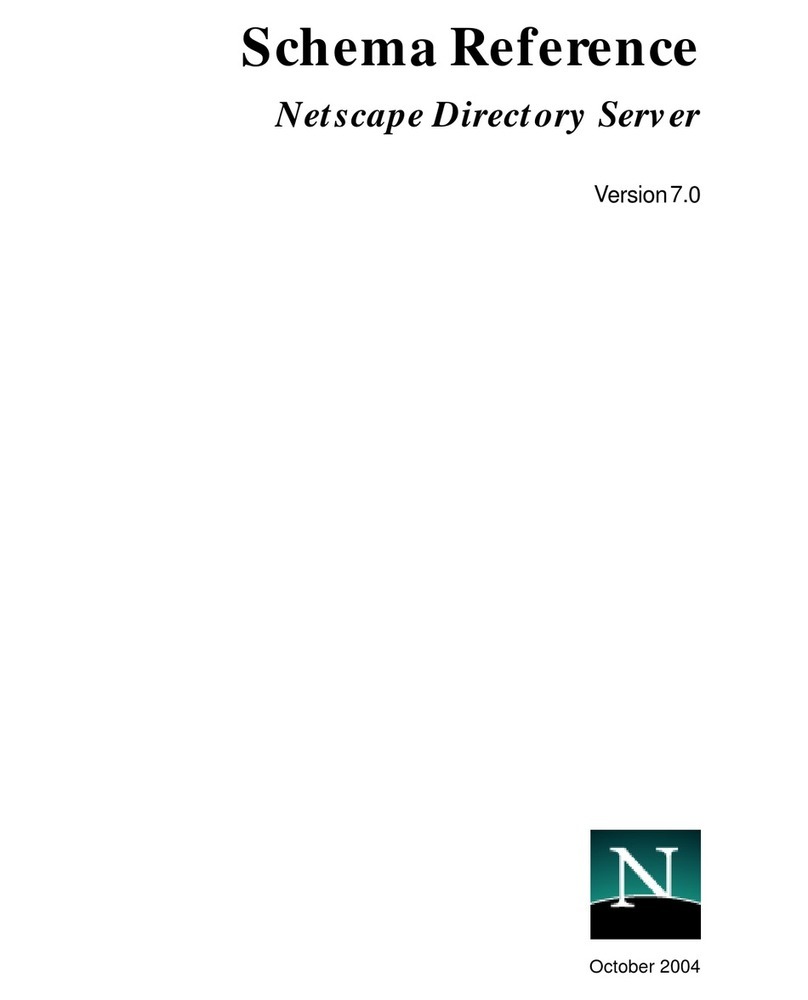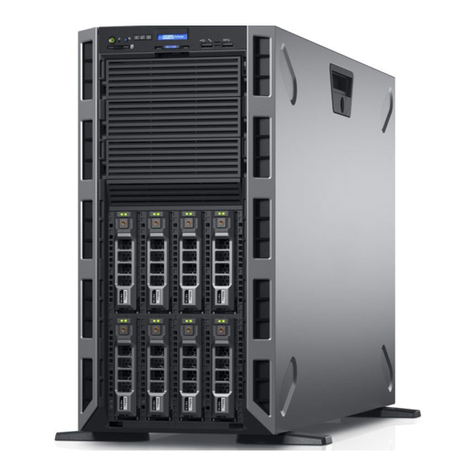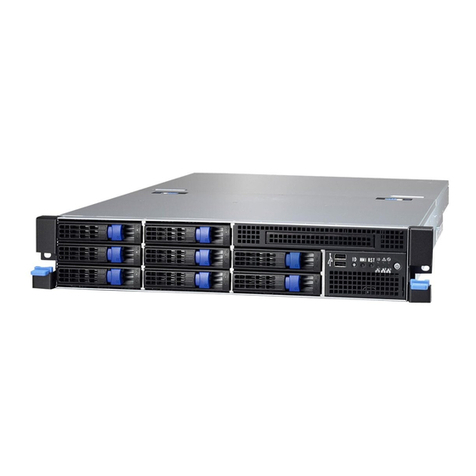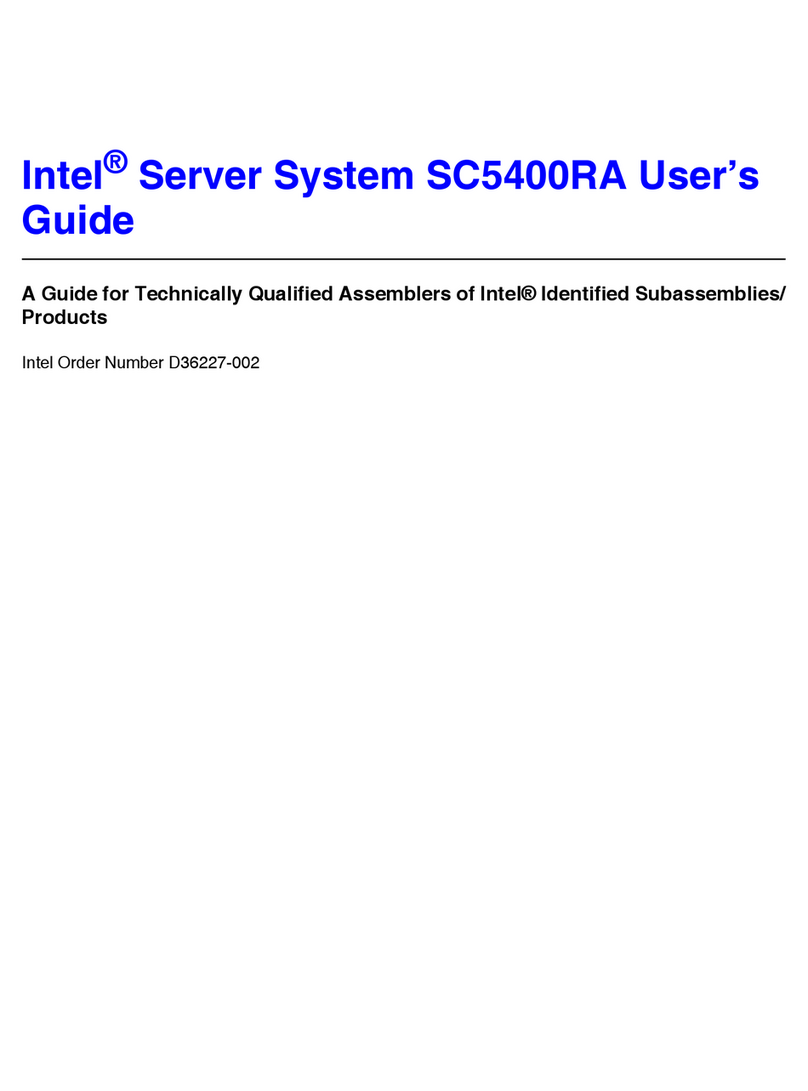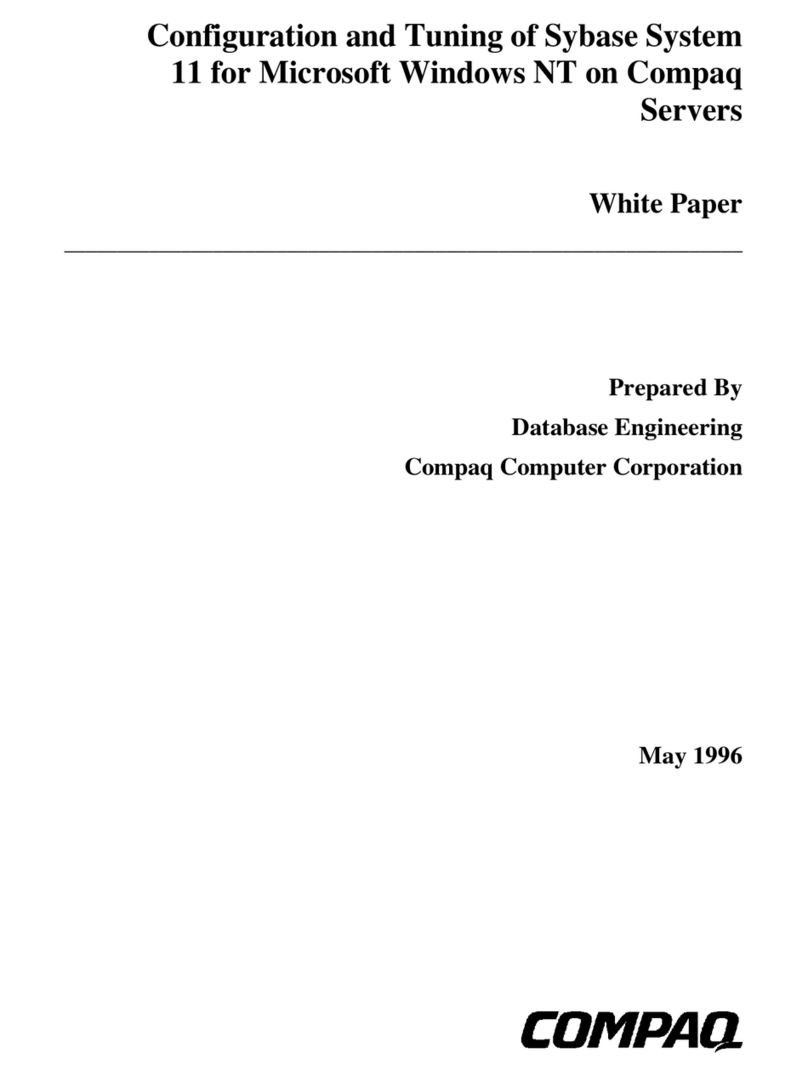Federal Signal Corporation SmartSystem SS2000-LMS User manual

Price $4.00
HARDWARE INSTALLATION AND MAINTENANCE INSTRUCTIONS
Model SS2000-LMS
SmartSystem™ Load Management System
LOAD MANAGERWITH ELECTRONIC SIREN/LIGHT
CONTROL SYSTEM AND
SignalMaster™ DIRECTIONAL LIGHT
(with Slide Switch Control Head)

LIMITED WARRANTY
The Signal Division, Federal Signal Corporation (Federal), warrants each
new product to be free from defects in material and workmanship, under
normal use and service, for a period of two years on parts replacement and
one year on labor from the date of delivery to the first user-purchaser.
Duringthiswarrantyperiod,theobligationofFederalislimitedtorepairing
or replacing, as Federal may elect, any part or parts of such product which
after examination by Federal discloses to be defective in material and/or
workmanship.
Federal will provide warranty for any unit which is delivered, transported
prepaid, to the Federal factory or designated authorized warranty service
center for examination and such examination reveals a defect in material
and/or workmanship.
This warranty does not cover travel expenses, the cost of specialized
equipment for gaining access to the product, or labor charges for removal
and re-installation of the product. Lamps, flash tubes, or batteries are not
covered under warranty.
Thiswarrantydoesnotextend to any unit which has been subjectedtoabuse,
misuse, improper installation or which has been inadequately maintained,
nor to units which have problems relating to service or modification at any
facility other than the Federal factory or authorized warranty service
centers.
THERE ARE NO OTHER WARRANTIES, EXPRESSED OR IMPLIED,
INCLUDING BUT NOT LIMITED TO, ANY IMPLIED WARRANTIES
OF MERCHANTABILITY OR FITNESS FOR A PARTICULAR
PURPOSE. IN NO EVENT SHALL FEDERAL BE LIABLE FOR ANY
LOSS OF PROFITS OR ANY INDIRECT OR CONSEQUENTIAL
DAMAGES ARISING OUT OF ANY SUCH DEFECT IN MATERIAL OR
WORKMANSHIP.

IMPORTANTWIRING INFORMATION
WARNING
The SS0000-LMS is an advanced microprocessor based siren system. Unlike conventional siren systems, malfunctions
and/or improper operation WILL result if proper installation procedures are not followed. Refer to the accompanying diagram and
pay special attention to the "CHECK LIST" at the bottom of this page. To complete the electrical installation, refer to paragraph 3-6.
IMPORTANT
It is the installer's responsibility to determine an appropriate location in the vehicle circuitry to connect the PARK (NEUTRAL
SAFETY) wire. This location should be determined prior to installation.
1. Is the red wire from the twelve pin connector (Pin 6)
connected to a point on the fuse block that is powered in run and
start positions? Use an in-line 20A fuse.
2. Is the black wire from the twelve pin connector (Pin 4)
connected to the fusible link at the front fender between the
negative (-) battery terminal and chassis ground? This is the
ONLY chassis ground allowed for this wire. The load manager
WILL NOT function properly if this step is not followed.
3. Is the green wire from the twelve pin connector (Pin 5)
connected to chassis ground?
AUXILIARY RELAY/SIREN POWER:
4. Is an 8/10 AWG wire connected to the load side of the
50/100-ampere circuit breakers? Route it through the hole
labeled +BAT on the amplifier/relay unit and attach it to LUG 1
on the circuit board. Use a 10 AWG wire with the 50-ampere
circuit breaker. Use an 8 AWG wire with the 100-ampere circuit
breaker.
SIGNALMASTER POWER:
5. Is the red 14 ga. wire (pin 10 of eleven-position connector)
connected to the load side of the 25-ampere circuit breaker?
CHECK LIST
YES
YES
YES
YES
YES
290A3913-01
B
AUXILIARY RELAYS
LMS/AMPLIFIER/RELAY UNIT
SIGNAL MASTER
SIGNAL MASTER
CONTROL HEAD
RJ11 (4)
SIREN + BAT
20 AMP
654
321
987
12 11 10
A
B
C
D
E
RELAY SWITCHED POWER
TO AUXILIARY DEVICES
1
2
3
RELAY SWITCHED
POWER TO LIGHTS
RED + 8/10AWG (MIN.)
CHASSIS GROUND, AT FUSIBLE
LINK ON FRONT FENDER.
VEHICLE CHASSIS
FUSE BLOCK *
SWITCHED IGNITION LINE CAPABLE
OF CARRYING AN ADDITIONAL 20A.
*
RED
GRN
BLK
AMPS 50
CB1
CIRCUIT
BREAKERS
JUMPER USED ONLY WHEN
TOTAL LOAD CURRENT IS
GREATER THAN 50 AMPS.
2550
VEHICLE BATTERY
- NEG POS +
( PIN 11) BLK 14AWG ( PIN 10) RED 14AWG
-i-

SECTION I
GENERAL DESCRIPTION
-1-
Figure 1-1.
The Federal Model SS2000-LMS (figure 1-1)
utilizes state-of-the-art technology to combine load
management with a fully featured, programmable
electronic siren and light control system. The unit
includes a small, compact Control Head, and an
Amplifier/SignalMaster™ Control/Relay Unit which
may be remotely mounted. Programming of the
various features is done from the keys on the Control
Head, without disassembly or removing the unit from
its mounting location.
A total of eight power control relay outputs are
provided. These outputs can be managed to perform
load shedding in response to a low battery voltage
condition. An audible beep sound is generated each
time a load is turned off (shed). Load shedding is only
performed when the vehicle is shifted into PARK.
When the vehicle is shifted out of PARK, all previ-
ously shed loads are restored at 0.5 second intervals
in the opposite order they were shed. Battery volt-
ages above the reference point do not restore previ-
ously shed loads. The load manager is reset only after
the vehicle is shifted out of PARK and then shifted
back into PARK. The load manager for specific loads
can be programmed to prevent load shedding under
certain operational conditions.
The SS2000-LMS produces wail, yelp, priority,
and hi-lo siren tones, as well as an air horn sound. A
horn ring transfer feature allowing horn ring control
of siren tones (Tap II) is also provided. Public address
(PA), with and without common microphone opera-
tion, and radio rebroadcast are available. Refer to the
replacement parts list at the end of this document for
the required microphone, or common microphone
290A3913-02
module, components. Eight relay outputs are avail-
able for control of light bars, other auxiliary lights,
and accessories. In addition, a full feature
SignalMaster controller is integrated into the system.
This system provides the automatic, simulta-
neous light and siren activation required by some
laws. Momentary, push-on/push-off, or timed relay
operation can be selected. A security shotgun timer is
also provided to minimize the possibility of unautho-
rized shotgun release. The SS2000-LMS’s technology
allows variation of these features during program-
ming. The Control Head can be customized with an
assortment of replaceable function labels (supplied)
to identify the switches.
The SS2000-LMS may be installed in the trunk,
under the seat, or under the dash of any vehicle with
a 12 volt, NEGATIVE ground electrical system. The
siren circuits are protected from failure modes by an
in-line fuse that is replaceable without tools. Relay
outputs are protected by individual fuses. Connection
between the Control Head and the SS2000-LMS is
via a telephone-type, four-conductor cable with
standard modular phone connectors at both ends for
simple installation.
The SS2000-LMS can drive one or two 11-ohm
impedance high power (100 Watt) or low power (58
Watt) speakers. When two speakers are used they
must always be connected in parallel and in phase.
The SS2000-LMS controls the SignalMaster
with the top row of switches and/or the slide switch
on the remote control head. Directional and warning
signals can be generated on the SignalMaster as well
as fast and low power versions of these signals.
Control of a six lamp SignalMaster is also available.
Other advanced features of the SS2000-LMS
include:
• High degree of reliability and compact size
through the use of CMOS microprocessor and
other integrated circuits.
• Simplified installation and service through use
of plug-in cables and printed circuit boards.
• Relay outputs are individually fused with
standard automotive type fuses.
• A one-inch thin remotely mounted control head
operates all lighting and siren functions.
• The siren tones comply with SAE J1849 JUL89
for the following model: SS2000-LMS (software
version SSLMS100 or greater).
• Two selectable voltage thresholds for load
manager.

-2-
SECTION II
SPECIFICATIONS
A. GENERAL.
Input Voltage ..................................................... 11VDC to 15VDC.
Polarity ............................................................ Negative ground only.
Operating Temperature Range ......................... -30°C to +65°C.
Standby Current ................................................ Less than .5 ampere
Dimensions:
Amplifier/SignalMaster Control/Relay Unit
Height................................................. 3-1/8"
Width .................................................. 6-3/8" (16.2cm)
Length ................................................ 6-1/4" (15.9cm)
Net Weight ......................................... 3-3/4 lbs. (1.704kg).
Control Head
Height................................................. 3-1/8" (5.87cm).
Width .................................................. 1.25" (3.18cm).
Length ................................................ 6-3/4" (17.15cm).
Net Weight ......................................... 9-5/8 oz. (0.273kg).
Shipping Weight ................................................ 6.8 lbs. (3.09kg).
B. LOAD MANAGEMENT SPECIFICATIONS.
High Idle Output ............................................... +BAT, 2A max.
Default Voltage Threshold ................................ 12.8VDC, 11.8VDC, 11.0VDC,
(13.8VDC, 12.8VDC, 11.8VDC selectable).
Load Shedding Interval ..................................... 30 seconds.
Adjustable Voltage Threshold Range ............... 11 - 15VDC.
C. SIREN SPECIFICATIONS.
Operating Current ............................................. 9 amperes (nominal).
(no lamps on) (13.6V battery, 11 ohm load @ high power)
Frequency Range ............................................... 725 to 1600Hz.
Nominal Cycle Rate ........................................... Wail - 12 cycles/min.
Yelp - 180 cycles/min.
Hi-Lo- 60 cycles/min.
Nominal Voltage Output ................................... 64V peak to peak (siren tones).
Audio Response .................................................. 300Hz to 3,000Hz ±3db.
Audio Power ....................................................... 45 watts in PA Mode (typical with 1.4V peak to peak input).
Harmonic Distortion .......................................... Less than 10% from 5 to 45 watts.
Input Impedance (PA) ....................................... 4000 ohms (nominal).
D. SIGNALMASTER SPECIFICATIONS.
Fuse ............................................................ 25 amperes (Halogen and LED)
7.5 amperes (Cuda TriOptic™ , 6 and 8 module)
Output Drive
Capability (Total) ............................................... 8,27 watt lamps
Normal Flash Rate
Directional ................................................. 35 patterns/min.
Warn........................................................... 60 patterns/min.
Fast Flash Rate
Directional ................................................. 60 patterns/min.
Warn........................................................... 95 patterns/min.

-3-
SECTION III
INSTALLATION
SAFETY MESSAGE TO INSTALLERS
OF
ELECTRONIC SIRENS
WARNING
The lives of people depend on your proper installation and
servicing of Federal products. It is important to read and
follow all instructions shipped with the products. In addition,
listed below are some other important safety instructions and
precautions you should follow:
Before Installation
Qualifications
• To properly install an electronic siren: you must have a
good understanding of automotive electrical procedures
and systems, along with proficiency in the installation
and service of safety warning equipment. Always refer to
the vehicle's service manuals when performing
equipment installations on a vehicle.
Sound Hazards
• Your hearing and the hearing of others, in or close to
your emergency vehicle, could be damaged by loud
sounds. This can occur from short exposures to very loud
sounds, or from longer exposures to moderately loud
sounds. For hearing conservation guidance, refer to
federal, state, or local recommendations. OSHA
Standard 1910.95 offers guidance on “Permissible Noise
Exposure.”
• All effective sirens and horns produce loud sounds (120
dB) that may cause permanent hearing loss. Always
minimize your exposure to siren sound and wear hearing
protection. Do not sound the siren indoors or in enclosed
areas where you and others will be exposed to the sound.
• Federal Signal siren amplifiers and speakers are
designed to work together as a system. Combining a
siren and speaker from different manufacturers may
reduce the warning effectiveness of the siren system and
may damage the components. You should verify or test
your combination to make sure the system works
together properly and meets federal, state and local
standards or guidelines.
During Installation
• DO NOT get metal shavings inside the product. Metal
shavings in the product can cause the system to fail. If
drilling must be done near the unit, place an ESD
approved cover over the unit to prevent metal shavings
from entering the unit. Inspect the unit after mounting
to be sure there are no shavings present in or near the
unit.
• DO NOT connect this system to the vehicle battery until
ALL other electrical connections are made, mounting of
all components is complete, and you have verified that
no shorts exist. If wiring is shorted to vehicle frame,
high current conductors can cause hazardous sparks
resulting in electrical fires or flying molten metal.
• Be sure the siren amplifier and speaker(s) in your
installation have compatible wattage ratings.
• In order for the electronic siren to function properly, the
ground connection must be made to the NEGATIVE
battery terminal.
• Sound output will be severely reduced if any objects are
in front of the speaker. If maximum sound output is
required for your application, you should ensure that the
front of the speaker is clear of any obstructions.
• Install the speaker(s) as far forward on the vehicle as
possible, in a location which provides maximum
signaling effectiveness and minimizes the sound
reaching the vehicle’s occupants. Refer to the National
Institute of Justice guide 500-00 for further information.
• Mounting the speakers behind the grille will reduce the
sound output and warning effectiveness of the siren
system. Before mounting speakers behind the grille,
make sure the vehicle operators are trained and
understand that this type of installation is less effective
for warning others.
• Sound propagation and warning effectiveness will be
severely reduced if the speaker is not facing forward.
Carefully follow the installation instructions and always
install the speaker with the projector facing forward.
• DO NOT install the speaker(s ) or route the speaker
wires where they may interfere with the operation of air
bag sensors.
• Installation of two speakers requires wiring speakers in
phase.
• Never attempt to install aftermarket equipment, which
connects to the vehicle wiring, without reviewing a
vehicle wiring diagram - available from the vehicle
manufacturer. Insure that your installation will not
affect vehicle operation and safety functions or circuits.
Always check vehicle for proper operation after
installation.
• DO NOT install equipment or route wiring or cord in the
deployment path of an air bag.
• Locate the control head so the vehicle, controls, and
microphone can be operated safely.
• When drilling into a vehicle structure, be sure that both
sides of the surface are clear of anything that could be
damaged.
After Installation
• After installation, test the siren system and light system
to ensure that it is operating properly.
• Test all vehicle functions, including horn operation,
vehicle safety functions and vehicle light systems, to
ensure proper operation. Ensure that installation has
not affected vehicle operation or changed any vehicle
safety function or circuit.
• After testing is complete, provide a copy of these
instructions to the instructional staff and all operating
personnel.
• File these instructions in a safe place and refer to them
when maintaining and/or reinstalling the product.
Failure to follow all safety precautions and instructions may
result in property damage, serious injury, or death to you or others.

-4-
WARNING
When installing equipment inside air bag
equipped vehicles, the installer MUST ensure
that the equipment is installed ONLY in areas
recommended by the vehicle manufacturer.
Failure to observe this warning will reduce
the effectiveness of the air bag, damage the
air bag, or potentially damage or dislodge the
equipment, causing serious injury or death to
you or others.
3-1. UNPACKING.
After unpacking the Model SS2000-LMS, exam-
ine it for damage that may have occurred in transit.
If the equipment has been damaged, file a claim
immediately with the carrier stating the extent of
damage. Carefully check all envelopes, shipping
labels and tags before removing or destroying them.
3-2. AMPLIFIER/SIGNALMASTER CONTROL/RELAY
UNIT MOUNTING LOCATION SELECTION.
When selecting a mounting location for the
SS2000-LMS Amplifier/SignalMaster Control/Relay
Unit (hereinafter called: Amplifier Unit) and the
control head, it is necessary to keep in mind any
limitations due to cable length. Before performing
any installation, see figure 3-1 (block wiring dia-
gram); plan all wiring and cable routing.
CAUTION
The SS2000-LMS Amplifier Unit housing
is NOT waterproof. It must be mounted in a
location which is sheltered from falling rain,
snow, standing water, etc. Also, it must be
installed in an adequately ventilated area.
Never install near heater ducts.
Do not mount the SS2000-LMS Amplifier
Unit under the vehicle’s hood.
Some possible Amplifier Unit mounting loca-
tions are: under the dash, under the front seat, or in
the trunk (under the rear deck, near the rear seat
speakers, if vehicle is so equipped).
Using the supplied mounting bracket will allow
the Amplifier Unit to be easily removed for wiring
and servicing, should it be needed.
3-3. SIGNALMASTER LIGHT ASSEMBLY.
Install the light assembly as described in the
instructions packed with the Federal Signal
SignalMaster™ Light Assembly. Route the cable
near the eventual location of the Amplifier Unit.
3-4. AMPLIFIER UNIT MOUNTING BRACKET.
To install the Amplifier Unit using the mounting
bracket, proceed as follows:
Figure 3-1. Block Wiring Diagram.
290A3913-03
B
AUXILIARY RELAYS
LMS/AMPLIFIER/RELAY UNIT
SIGNAL MASTER
SIGNAL MASTER
CONTROL HEAD
RJ11 (4)
SIREN + BAT
20 AMP
654
321
987
12 11 10
A
B
C
D
E
RELAY SWITCHED POWER
TO AUXILIARY DEVICES
1
2
3
RELAY SWITCHED
POWER TO LIGHTS
RED + 8/10AWG (MIN.)
CHASSIS GROUND, AT FUSIBLE
LINK ON FRONT FENDER.
VEHICLE CHASSIS
FUSE BLOCK *
SWITCHED IGNITION LINE CAPABLE
OF CARRYING AN ADDITIONAL 20A.
*
RED
GRN
BLK
AMPS 50
CB1
CIRCUIT
BREAKERS
JUMPER USED ONLY WHEN
TOTAL LOAD CURRENT IS
GREATER THAN 50 AMPS.
2550
VEHICLE BATTERY
- NEG POS +
( PIN 11) BLK 14AWG ( PIN 10) RED 14AWG

-5-
A. Use the mounting bracket as a template
and scribe two drill positioning marks at the selected
mounting location.
CAUTION
Before drilling holes in ANY part of a vehicle,
be sure that both sides of the mounting surface
are clear of parts that could be damaged; such
as brake lines, fuel lines, electrical wiring or
other vital parts.
NOTE
If desired, the #14 thread-forming screws
may be used in place of the 1/4-20 x 3/4 hex
head screws.
B. Drill two mounting holes at the position
marks.
C. Secure the mounting bracket to the mount-
ing surface with (2 each) 1/4-20 x 3/4 hex head
screws, 1/4 split lockwashers and 1/4-20 hex nuts as
shown in figure 3-2.
3-5. CONTROL HEAD INSTALLATION.
CAUTION
Load management will not functionproperly if
the control head from another model is used.
The supplied control head MUST be used for
proper operation.
Several control head mounting methods are
available. The mounting method used will depend on
available room, and user preference.
CAUTION
Unreliable switch activation and loss of “tactile
feedback” will result if the control head mount-
ing method allows movement. DO NOT mount
the control head on padded surfaces.
WARNING
When installing equipment inside air bag
equipped vehicles, the installer MUST ensure
that the equipment is installed ONLY in areas
recommended by the vehicle manufacturer.
Failure to observe this warning will reduce
the effectiveness of the air bag, damage the
air bag, or potentially damage or dislodge the
equipment, causing serious injury or death to
you or others.
Choose a location for the control head that
allows the vehicle, controls, and microphone to be
operated safely at all times.
See figure 3-3. The supplied hinged mounting
bracket enables the control head to be mounted in a
variety of positions. Positioning the bracket above the
unit allows mounting the control head on the under-
side of the dash. Positioning the bracket below the
unit will permit mounting on any horizontal surface.
To mount the control head using the bracket, proceed
as follows:
A. Assemble a bracket to the control head
using the 6-32 x 1/4 screws and #6 lockwashers.
Assemble the other bracket to the control head/
bracket assembly using the 1/4-20 x 3/4 hex head
screws and 1/4" lockwashers as shown in figure 3-4.
NOTE
The brackets are not symmetrical. After assem-
bling the brackets to the control head, ensure
that the assembly can be properly positioned
at the intended mounting location. If proper
positioning cannot be achieved, reverse the
bracket.
B. Use the mounting bracket as a template
and scribe two drill positioning marks at the selected
mounting location.
CAUTION
Before drilling holes in ANY part of a vehicle,
be sure that both sides of the mounting sur-
face are clear of parts that could be damaged;
such as brake lines, fuel lines, electrical wiring
or other vital parts.
Figure 3-2. Mounting Bracket Installation.
290A3913-04
B
NOTE:
ONLY ONE BRACKET IS SUPPLIED.
1/4-20 x 7/16"
SCREW, TYPE
TT THD. HEX
WSH.HD
BLK. OXIDE (2)
1/4" SPLIT
LOCKWASHER
SmartSystem -LMS
SS2000-LMS
MOUNTING
R
LIGHTS
KEYPAD
FEDERAL SIGNAL CORP.
SmartSystem-LMSSS2000-LMS
321ABCDE
SignalMaster
AUX OUTPUTS NO NC C
+
BAT
MIC
SignalMaster
FUSE
1/4-20 x 3/4" HEX
HD. CAP SCREW (2)
OPTIONAL #14 THD.
FRM. SCREW (2) MAY
BE SUBSTITUTED
(BOTH SUPPLIED)
MOUNTING
BRACKET (1)
1/4" SPLIT
LOCKWASHER (4)
1/4-20 HEX NUT (2)

Figure 3-5. Rear View of SS2000-LMS.
-6-
Figure 3-6. Amplifier Unit Power Cable and
Fuse Clip Adapter Installation.
Figure 3-4. Control Head and Bracket Installation.
Figure 3-3. Control Head Bracket Assembly.
Using 18 gauge wire, connect the
speaker leads (58W speakers to SPEAKER LO
POWER or 100W speakers to SPEAKER HI POWER)
as shown in Power Cable Wiring Diagram, figure 3-6.
2. Radio.
To allow incoming radio messages to
be rebroadcast over the outside speakers, connect the
two brown zip cord leads (pins 9 and 12 of the power
cable) across the two-way radio’s speaker.
3. Horn Ring.
In order to utilize the horn ring control
of siren tones (Tap II) and other features of the siren,
the following procedure must be performed.
a. Locate the wire that connects the
vehicle horn ring switch to the horn or horn relay.
Cut this wire.
b. See figure 3-7. Splice the white/
yellow power cable wire to the horn ring side of the
C. Drill two mounting holes at the position
marks.
D. Secure the mounting bracket to the mount-
ing surface with the #10 thread-forming screws as
shown in figure 3-4.
3-6. ELECTRICAL INSTALLATION.
A. Power Cable Connections.
The power cable included in the carton is
equipped with a twelve-pin plug that mates with the
connector on the rear of the Amplifier Unit (see
figure 3-5). The cable is supplied with a 20-ampere
in-line fuse. Additional wire (the same gauge or
heavier) may be spliced to the leads as required. The
various wires on the connector must be connected as
follows:
1. Speaker.
The unit is designed to operate with
one 11-ohm impedance speaker or two 11-ohm
impedance, low power (58W) or high power (100W),
speakers connected in parallel and in phase. On
Federal speakers, this can be accomplished by
connecting the two speaker leads marked “1” to the
SPEAKER COMMON power cable lead and the two
speaker leads marked “2” to the SPEAKER HI
POWER or SPEAKER LO POWER power cable
leads. See figure 3-6.
290A3913-05
CONTROL HEAD
BRACKET (1 OF 2)
NOTE: USE ONE OF THE THREE
SETS OF HOLES. THIS ALLOWS
UP/DOWN CONTROL POSITION OF
THE PIVOT BRACKET.
#6-32 x 1/4" SCREW,
PHL. PAN HD (2)
PEM-NUT (ATTACHED
TO BRACKET)
#6 SPLIT LOCKWASHER (2)
290A3913-06
PILOT HOLES (2)
MOUNTING HOLES
FOR #10 SCREWS
PREVIOUSLY ASSEMBLED
CONTROL HEAD
AND BRACKET
PEM-NUTS (ATTACHED TO BRACKETS)
1/4" LOCKWASHER,
EXT. TOOTH (2)
BRACKET (2 OF 2)
MOUNTING
SURFACE
#10 SCREWS,
THD. FORM. (2)
1/4-20 x 3/4" SCREW,
HEX HD. (2)
290A3913-08B
SPEAKER, COMMON
SPEAKER, LOW POWER(58W)
SPEAKER, HIGH POWER(100W)
(NEG.) (-) AT FUSIBLE LINK
(POS.) (+) FUSE BLOCK
HORN RING
HORN
PARK DEACTIVATOR
CHASSIS GROUND
20 AMP
HIGH IDLE OUTPUT
OR COMMON MIC ENABLE
VEHICLE TWO-WAY
RADIO SPEAKER
123
456
789
10 11 12
BLU
ORN
BRN
BLK
GRN
RED
BRN
BRN
GRA
WHT
WHT/YEL
PRP
290A3913-09
B
1. SLIP MALE
CLIP OVER THE
FUSE.
2. INSERT CLIP
AND FUSE INTO
FUSE BLOCK.
3. ATTACH THE
RED WIRE WITH
FEMALE CLIP.
MALE
CLIP
FEMALE
CLIP
RED
WIRE
FUSE
TOP OF
FUSE BLOCK
LIGHTS AUX OUTPUTS NO NC C
3
SignalMaster
FUSE
+ BAT 21 ABCDE
SignalMaster
TM
FEDERAL SIGNAL CORP.
SS2000-LMS
S
I
R
E
N
MIC KEYPAD
INPUT
SmartSystem -LMS
R
UNIVERSITY PARK, IL USA
290A3913-07
B
12 PIN CONNECTOR TB1 J2TB2
U.S PATENT 5,296,840 & 5,557,257
INTERNATIONAL PATENTS APPLY

-7-
wire that was cut in step a. Insulate the splice with
the wire nuts (supplied).
CAUTION
The horn ring transfer circuit of the siren is
capable of switching a maximum of 2-amperes.
Some vehicles do not have a horn relay and,
consequently, will draw more than 2-amperes
when the vehicle horn is activated. Consult
your vehicle service manual or a qualified
mechanic to determine the current required
to activate the horn. If it is less than
2-amperes, perform the procedure in step c.
If it is greater than 2-amperes, perform
steps d through j.
c. Splice the white power cable wire
to the horn side of the cut wire. Insulate the splice
with a wire nut.
d. Obtain a SPST relay of sufficient
contact current capacity to activate the vehicle horn.
Refer to figure 3-7 while performing the following
steps.
e. Mount the relay in a suitable
location.
f. Connect the horn side of the wire
cut in step a to the relay contact terminal.
g. Determine the “sense” of the
vehicle’s horn ring activation circuit, i.e., does the
horn circuit require a switched positive voltage or
switched ground for activation.
h. Connect the switched relay
contact terminal to the positive or negative potential
determined in step g.
i. Connect the white power cable
wire to one end of the relay coil.
j. Connect the other end of the relay
coil to the opposite potential of that connected to the
switched relay contact terminal in step h.
Figure 3-7. Horn Ring Connections.
290A3913-10
VEHICLE HORNS STEERING COLUMN
TO BATTERY
RELAY (USER SUPPLIED)
CUT WIRE
SW
TO HORN, OR HORN RELAY
CONTROL CABLE ASSEMBLY
WHT
WHT/YEL TO HORN SWITCH
4. Park-Siren Deactivator and Load
Manager Activation.
IMPORTANT
It is the installer's responsibility to determine
an appropriate location in the vehicle cir-
cuitry to connect the PARK (NEUTRAL
SAFETY) wire. This location should be
determined prior to installation.
This feature uses the park input wire
to enable the load manager and automatically
deactivate siren tones when the vehicle is shifted into
PARK.
See figure 3-6. To use this feature,
connect the power cable’s gray wire to a vehicle
circuit that is grounded when the vehicle is shifted
into PARK.
5. Common Microphone Enable.
The control head's key #10 (the second
key from the left in the middle row) can be configured
for either common microphone control or high idle
control. Refer to Level 5-Load Management program-
ming in the Operation and Configuration Instruc-
tions to program the function of this key.
If common microphone control is
enabled, the control head's PA switch will function in
a push-on/push-off mode with a +12VDC (2A max.)
output to operate in conjunction with the common
microphone module and share the common micro-
phone with the Ericsson Orion™ radio.
The common microphone enable and
high idle control are mutually exclusive. See figure 3-
8 for driving an external device.
6. High Idle Control.
Configure the high idle control as
described in the Operation and Configuration In-
structions. The control head's high idle switch can
function only in a push-on/push-off mode when the
vehicle is shifted into PARK.
When the vehicle is shifted into PARK
and the control head's high idle switch is activated,
+12VDC is supplied on the power cable’s violet wire.
This +12VDC is capable of supplying 1-amp., which
should be adequate for most high idle activators.
If an external relay to drive the high
idle activator is needed, a 40-amp. relay (Federal
Signal Part No. 131A175) is recommended. Figure 3-
8 shows the wiring for any single pole relay. The pin

-8-
Figure 3-8. External High Idle Control or
Common Microphone Module.
numbers shown are for the recommended Federal
Signal relay.
7. Connection to Power Source (see
figure 3-6).
The SS2000-LMS must operate from a
12 volt NEGATIVE ground vehicle electrical system.
Therefore, before making any electrical connections,
verify the polarity of the vehicle electrical system
ground.
NOTE
Transient noise pulses caused by the automo-
tive power system or surge currents due to
switching inductive or incandescent lamp loads
may cause malfunctions in the SS2000-LMS
if proper wire routing is not followed.
The Amplifier Unit red (positive) power
cable lead should be as short and direct to the
fuse block or user-supplied switch (current
capacity of at least 20 amps) as possible. DO
NOT splice to accessory power leads.
The Amplifier Unit's black (negative)
power cable lead should be as short and direct
to the fusible link on the front fender as pos-
sible. DO NOT splice to accessory negative
(black) leads.
IMPORTANT
The SS2000-LMS does not have an on-off
switch. If power is obtained directly from the
vehicle battery, the system will continuously
draw approximately 0.5A and will eventually
discharge the vehicle’s battery. It is RECOM-
MENDED that the Amplifier Unit's power
be obtained from a vehicle circuit that is
powered in the RUN, and START positions.
Power can also be obtained from a user-supplied
switch (current capacity of at least 20 amps).
The load manager will not function properly if
power obtained from a user-supplied switch
controls power to any other device.
CAUTION
Before drilling holes in ANY part of a vehicle,
ensure that both sides of the surface are clear
of parts that could be damaged; such as brake
lines, fuel lines, electrical wiring or other vital
parts.
a. Connect the green power cable
lead to the vehicle chassis as close as practical to the
Amplifier Unit. Scrape paint away from the selected
bolt hole to assure a good electrical connection to the
chassis.
b. Power for the Amplifier Unit can
be obtained from the vehicle’s fuse block; or a dedi-
290A3913-11
+12VDC
PRP. WIRE FROM SIREN
POWER CABLE, PIN 8
85 30
86
GROUND
87 AUXILIARY
DEVICE
cated (cannot share power with other devices) 20-
ampere fused, switched circuit. When obtaining
power from the vehicle’s fuse block, refer to the
vehicle’s wiring manual to ensure the unit will be
powered in the RUN and START positions.
Route the red (+) power cable lead
to the fuse block or user-supplied switch. When the
red (+) power cable lead is routed to the fuse block,
install the supplied fuse clip adapter as follows (see
figure 3-6):
(1). Slip the fuse clip adapter
over the fuse.
(2). Insert the adapter clip/fuse
into the applicable fuse block location (refer to the
vehicle’s wiring manual) with the adapter clip end
toward the top of the fuse block. Make sure that the
selected fuse block location is capable of supplying an
additional 20-amperes.
(3). Attach the power cable’s red
wire on the fuse clip.
c. To protect the wires, use the in-
line fuseholder and 20-ampere fuse. The fuseholder
and fuse should be installed in the red (+) lead as
close as practical to the power source.
d. Route the black (-) power cable
lead through the previously drilled hole into the
engine compartment, and through existing clamps
and holders toward the fusible link on the front
fender. DO NOT make any connections to the battery
until all other wiring is complete.
IMPORTANT
The red (+) power and black (-) power wires
must be connected as described or the load
manager WILL NOT function properly.
B. Light Bar and Auxiliary Light Connections.
The SS2000-LMS is programmed at the
factory to satisfy most installation requirements.
Before proceeding with installation, refer to the
supplied Operation and Configuration Instructions
for a description of the “standard” program, and
instructions on how to change the programming.

-9-
4. See figure 3-9. To protect the wire, 2
circuit breakers (CB1) rated at 50-amperes (Federal
Part No. 8474A176 or equivalent) should be con-
nected as close as practical to the positive (+) battery
terminal. When the total load current is greater than
50-amperes, use a 100-ampere circuit breaker. When
the total load current is less than 50-amperes, use a
50-ampere circuit breaker.
To use the Federal 50-ampere circuit
breakers (Part No. 8474A176) as a 100-ampere
circuit breaker, add the supplied jumper between the
two circuit breakers on the load side. DO NOT
remove the jumper on the battery side of the circuit
breakers.
WARNING
When making the following connections, never
exceed the current rating of the circuit break-
ers (CB1) near the battery (see figure 3-9).
Failure to do this will result in a shutdown of
the vehicle warning system.
5. See figures 3-5 and 3-10. Connect
wires from the light bar or accessories to TB1-1
through TB1-3 or TB2-A through TB2-E as appli-
cable. All wire connections for TB2 will be made with
the right angle plug. (See face plate for relay designa-
tors.) Refer to the instructions packed with the light
bar or accessory for proper wire gauge, current
requirements, and any additional instructions. Do
NOT exceed fuse ratings shown in table 3-1.
CAUTION
NEVER exceed fuse current ratings. Installa-
tion of higher current fuses WILL damage the
unit and void the warranty.
The SS2000-LMS provides two terminal
strips (TB1 & TB2) for control of light bars, auxiliary
lights and accessories. A total of eight fused relay-
controlled outputs are available.
Each output switches a nominal +12-volts
to the controlled device. Do NOT use the black wire
in the power cable for grounding the switched
device(s). Ground the switched devices separately.
Refer to the installation instructions
provided with the light bar or auxiliary light for
additional precautions and details.
IMPORTANT
Since the terminals labeled LIGHTS 1, 2, and 3
can be reprogrammed to activate in any of the
three modes, select the terminals used for the
various loads in accordance with the current
ratings of the terminals.
Primary rotating lights normally require more
current than flashing or secondary warning
lights. If, for example, primary rotating lights
are to be activated in Modes 2 and 3, connect
the rotators to LIGHTS 3 (rated at 40-amperes).
Then, reprogram the unit to activate the
LIGHTS 3 terminal in Modes 2 and 3.
Fuse current ratings and suggested uses for
each output are shown in table 3-1.
Complete the wiring to the light bar or
accessories as follows:
CAUTION
The relay board WILL be damaged if correct
polarity is not observed.
1. Remove the chassis cover by loosening
the 2 screws on the bottom of the unit. Slide the cover
to expose the relay board and terminal strips.
2. Route a #10AWG (minimum) red wire
through the hole labeled +BAT and attach it to the
large lug-type terminal (LUG1) on the relay board.
The lug is accessible through the top of the unit via
the hole labeled +BAT. Use a flathead screwdriver to
loosen and tighten this lug. Use a #8 AWG red wire if
the total light bar and auxiliary load currents exceed
50-amperes. Since this wire provides the power
source for all switched lighting functions, a good
mechanical and electrical connection here is impor-
tant.
3. Route this wire through the previously
drilled hole into the engine compartment and
through existing clamps and holders toward the
battery. Do NOT make any connections to the battery
until all wiring is complete.
Output Fuse / Rating Relay Suggested
Terminal Application
LIGHTS 1 F1 / 20-amps K1 Rear Flashing
LIGHTS 2 F2 / 20-amps K2 Front Flashing or
Secondary Warning
Lights
LIGHTS 3 F3A & F3B / K3 Rotating or Primary
two 20-amps= Warning Lights
40-amps total
A - E FA, FB, FC, KA, KB, Auxiliary Lights
FD, FE / KC, KD, (Takedown, Alley, etc.)
10-Amps. ea. KE
Note: Output E provides both normally open/normally closed
(NO/NC) and common contacts. By removing the fuse
labeled FE, it can be isolated from the +12-volt battery
supply for switching other POSITIVE voltages.
Table 3-1. Output Ratings.

-10- Figure 3-11. SignalMaster Connections.
Figure 3-10. Relay Board.
c. Route user-supplied red and black
14-gauge wires through the firewall and toward the
battery. Connect the red wire to one end of the
supplied 25-ampere circuit breaker (Part No. 152118-
25). Do not connect the other end of the circuit
breaker to the (+) positive terminal until ALL wiring
is complete.
d. Strip 1/4" of insulation off each
wire at the eleven-position connector end. Insert the
eight 22-gauge wires, the 16-gauge red wire, and the
14-gauge red and black wires into the connector as
shown in figures 3-11 and 3-12. Tighten the screw at
290A3913-13
321
TIP OF
SCREWDRIVER MATING
CONNECTOR
PRINTED
CIRCUIT
BOARD
CONNECTOR
STRIPPED WIRES
1. LOOSEN SCREW.
2. INSERT STRIPPED
WIRE IN CONNECTOR.
3. TIGHTEN SCREW.
CR2
CR1
CR6
CR8
CR7
CR12
CR11
CR10
CR9 CR5
CR4
R3
TB2
R5
R1
CR16
JP3
R2
CR14
F3B F3A F2 FAF1
FB FC FD FE
CR3
A B C D E F AUX
TB1 321
K2 K1 KA KB KD
KE
KC
K3
LUG1
MADE IN U.S.A.
FEDERAL SIGNAL CORP.
UNIVERSITY PARK, IL
2005100A-
RELAY BOARD
RN1
JU1
R8
U1
U2
U3
C5
JP1
JP4
R7
C2
CR13 H1
CR15
C4
C1
C7
Q1
C6
C3
R6
R4
JP2
1
1
1
1
U4
RN2
2
C8
H2
JP5
R10
L1
H3
C10
R11
R9
C9
R12
H4
Figure 3-9. Battery Connections.
290A3913-12
FROM POSITIVE (
+
)
BATTERY TERMINAL
8 AWG, RED
50 AMP CIRCUIT
BREAKER (2)
CB1
FUSIBLE LINK,
TO NEGATIVE (
-
)
BATTERY TERMINAL
TO INTERFACE / RELAY
(
+
BAT) RED,
8/10 AWG
*
CHASSIS
GROUND
REQUIRED FOR AUXILIARY RELAYS
FROM INTERFACE / RELAY
(PI-4) BLK
*
BATTERY
NOTE
Although output #3 is rated at 40-amperes,
the circuit is protected by two 20-ampere
fuses which are connected in parallel. TB1-3
(output #3) has two terminals in parallel to
obtain that rating.
6. When the current requirement for
LIGHTS 3 exceeds 30-amperes, split the load be-
tween the two terminals of TB1-3 or connect the two
terminals together with the supplied jumper (Federal
Part No. 233A198 or equivalent).
CAUTION
Personal injury, vehicle component damage,
and/or damage to the Amplifier Unit
will occur if the LIGHTS 3 terminal (TB1-3)
is shorted to the chassis. Before replacing the
chassis cover, ensure that the jumper (if in-
stalled) between the two terminals of TB1-3
will not short to the chassis.
7. Replace the chassis cover. Slide it
forward and secure with the two screws.
C. SignalMaster Connections.
The Amplifier unit is not supplied with a
fuse installed for the SignalMaster. The kit contains
a 25-ampere and a 7.5-ampere fuse. Follow the
appropriate installation instructions depending on
the type of SignalMaster, halogen or LED.
1. Halogen.
a. Unless previously routed, route
the SignalMaster cable toward the Amplifier Unit.
Use caution to avoid scraping the wires on any sharp
edges.
b. Cut the cable to the appropriate
length as required.
AUX
32E
1A B C D
OUTPUTS NONCC
LIGHTS
+
BAT
SignalMaster
FUSE
MIC KEYPAD
SignalMaster
SmartSystem®-LMS SS2000-LMS
290A3913-14B
(11) BLK 14AWG
-
GND
WHT (1)
1/4"
BRN (2)
GRN (3)
ORN (4)
PRP (5)
GRA (6)
YEL (7)
BLU (8)
RED (9)
9 CONDUCTOR CABLE FROM SIGNAL MASTER
(10) RED 14AWG
+
BAT
25 AMP BREAKER

-11-
Figure 3-12. SignalMaster Eleven-position Connector.
each connector position to secure the wires in the
connector.
e. As supplied in the kit, insert a 25-
ampere fuse in the fuse holder in the back of the
Amplifier unit.
2. LED.
a. Unless previously routed, route
the SignalMaster cable toward the Amplifier Unit.
Use caution to avoid scraping the wires on any sharp
edges.
b. Cut the cable to the appropriate
length as required.
c. Route user-supplied black 14-
gauge wire through the firewall and toward the
battery. Route the user-supplied red 14-gauge wire
toward the ignition terminal. Connect the red wire to
one end of the supplied 25-ampere circuit breaker
(Part No. 152118-25). Do not connect the other end of
the circuit breaker to the ignition terminal until ALL
wiring is complete.
d. Strip 1/4" of insulation off each wire
at the eleven-position connector end. Insert the eight
22-gauge wires, the 16-gauge red wire, and the 14-
gauge red and black wires into the connector as
shown in figure 3-13 and figure 3-12. Tighten the
screw at each connector position to secure the wires
in the connector.
e. As supplied in the kit, insert the
appropriate fuse (25-ampere for LED SignalMasters
or 7.5-ampere for Cuda TriOptic™, 6 or 8 module) in
the fuse holder in the back of the Amplifier unit.
D. Control Head Connections.
All connections between the SS2000-LMS
control head and Amplifier Unit are accomplished by
a single 20-foot telephone-type cable (provided). It is
terminated with modular-type connectors on each
end.
CAUTION
The unit will not operate if the telephone-type
cable is improperly wired. If it is necessary to
shorten the 4 conductor telephone-type cable,
ensure that the connections made to the
modular connector are exactly the same as the
original cable connections.
To complete this portion of the installation,
proceed as follows:
1. Route the 20-foot cable between the
SS2000-LMS control head and the Amplifier Unit.
Secure the cable with user-supplied clamps and hold
downs as required.
2. Insert the modular connector in the
receptacle on the back of the SS2000-LMS Amplifier
Unit. Secure with user-supplied clamps and/or wire
ties to provide strain relief.
3. Insert the other modular connector in
the receptacle on the control head. Secure with user-
supplied clamps and/or wire ties to provide strain
relief.
E. Microphone Connections.
The SS2000-LMS is not supplied with a
microphone. A Federal Model MNCT-SB microphone
may be plugged into the microphone jack on the rear
of the Amplifier Unit.
If the Amplifier Unit is remotely mounted,
Model RMK (microphone extension kit) is available
from Federal. It includes a 20- foot extension cable
with phone plug, jack, and dashboard mounting
bracket.
Carefully route the extension cable through
the vehicle along with the telephone-type cable, and
secure with user-supplied clamps and ties as re-
quired.
The SS2000-LMS also provides common
microphone capability. Use the Federal Signal
common microphone module to connect a common
microphone such as the GE radio microphone. See
figure 3-6 to connect the "common microphone
enable" to the common microphone module.
3-7. INSPECTION AND FINAL INSTALLATION.
A. See figure 3-2. Secure the SS2000-LMS
Amplifier Unit to the mounting bracket with the
BLACK 1/4-20 x 1/2 hex head screws and 1/4 split
lockwashers. Ensure all fasteners are properly
tightened.
B. Before connection to the power source,
perform a visual check of all connections and wiring.
290A3913-1
5
TIP OF SCREWDRIVER
MATING CONNECTOR
PRINTED CIRCUIT
BOARD
CONNECTOR
STRIPPED WIRES
1. LOOSEN SCREW.
2. INSERT STRIPPED
WIRE IN CONNECTOR.
3. TIGHTEN SCREW.

-12-
Figure 3-13. Function Label Installation.
LOW
POWER
DOOR
AREA
P
AUX 1
WAIL WAIL
DOM
AUX 2
A / H
AU
MAN
Y
FAST
RIGHT
ALLEY
E
290A3913-16
KEYBOARD
LEGEND INSERTED
LEGEND INSERT
(REMOVED
FROM SHEET)
LEGEND SHEET
BLANK
KEYPADS
To install the function legends, proceed as
follows:
Select the appropriate labels from the supplied
sheet of function legends. Peel the labels from the
sheet and apply to the key pad in the area provided
as shown in figure 3-13. Verify that the label is
properly tucked under the retaining ridge on the
pushbutton.
3-9. TESTING AFTER INSTALLATION.
WARNING
All effective sirens and horns produce loud
sounds (120 dB) that may cause permanent
hearing loss. Always minimize your exposure
to siren sound and wear hearing protection.
Do not sound the siren indoors or in enclosed
areas where you and others will be exposed to
the sound.
Before testing, read and understand the sup-
plied Operation and Configuration Instructions. After
installation is complete, test all siren and light
functions to ensure that all functions and controlled
devices operate as intended. Test all vehicle func-
tions, including horn operation, vehicle light systems,
and load management, to ensure proper operation.
Programming is described in the supplied
Operation and Configuration Instructions.
After testing is complete, provide a copy of this
manual to all operating personnel.
C. Ensure that there are no loose wire strands
or other bare wire which may cause a short circuit.
Also, all wires must be protected from any sharp
edges which could eventually cut through the insula-
tion.
D. Use an ohmmeter to verify that a short
circuit does NOT exist between the positive (+) and
negative (-) power cable leads. Also, there must be
NO short circuits between the positive (+) wires and
the vehicle chassis.
E. After performing steps A through D,
connect all black (-) wires to the fusible link on the
front fender. Secure mechanical and electrical con-
nections are required.
WARNING
If wires are shorted to the vehicle frame or
each other, high current conductors can cause
hazardous sparks resulting in electrical fires
and molten metal.
Verify that no short circuits exist before
connecting to the Positive (+) battery termi-
nal.
DO NOT connect this system to the vehicle
battery until ALL other electrical connections
are made and mounting of all components is
complete.
Failure to observe this WARNING will result
in fire, burns and blindness.
F. Connect all #8 or #10AWG (minimum) red
(+) wires to the positive (+) terminal of the power
source. Also, connect a 14-gauge red wire from the
unused end of the 25-ampere circuit breaker (from
the SignalMaster connector) to the positive (+)
terminal of the power source. Again, secure mechani-
cal and electrical connections are required.
3-8. REPLACEABLE FUNCTION LABELS.
See figure 3-13. Replaceable function labels
identify the switches on the control head. A sheet of
applicable function legends is supplied.

-13-
SECTION IV
OPERATION
SAFETY MESSAGE TO OPERATORS OF
FEDERAL SIGNAL ELECTRONIC SIRENS
AND LIGHT/SOUND SYSTEMS
WARNING
The lives of people depend on your safe operation of
Federal products. It is important to read and follow
all instructions shipped with the products. In addi-
tion, listed below are some other important safety
instructions and precautions you should follow:
Qualifications
• To properly use an electronic siren and
speaker(s): you must have a good understanding
of general vehicle operation, a high proficiency in
the use of safety warning equipment, and
thorough knowledge of state and federal UNI-
FORM TRAFFIC CODES.
Sound Hazards
• Your hearing and the hearing of others, in or close
to your emergency vehicle, could be damaged by
loud sounds. This can occur from short exposures
to very loud sounds, or from longer exposures to
moderately loud sounds. For hearing conservation
guidance, refer to federal, state, or local recom-
mendations. OSHA Standard 1910.95 offers
guidance on “Permissible Noise Exposure.”
• All effective sirens and horns produce loud sounds
(120 dB) that may cause permanent hearing loss.
Always minimize your exposure to siren sound,
roll up your windows and wear hearing protec-
tion. Do not sound the siren indoors or in
enclosed areas where you and others will be
exposed to the sound. Only use the siren for
emergency response situations.
Sound Limitations
• Before using the vehicle, check to see if the siren
speakers are concealed from view. If the siren
speaker is not in clear view on the front of the
vehicle, use extra caution when operating the
vehicle. A concealed siren speaker installation is
less effective at warning others.
• Maximum sound output will be severely reduced
if any objects are in front of the speaker. If your
installation has obstructions in front of the
speaker, drive even more cautiously.
• Frequently inspect the speaker to ensure that it is
clear of any obstruction, such as mud or snow,
which will reduce maximum sound output.
Signaling Limitations
• Be aware that the use of your visual and audible
signaling devices does not give you the right to
force your way through traffic. Your emergency
lights, siren, and actions are REQUESTING the
right-of-way.
• Although your warning system is operating
properly, it may not alert everyone. People may
not hear, see, or heed your warning signal. You
must recognize this fact and continue driving
cautiously.
• Situations may occur which obstruct your
warning signal when natural or man-made objects
are between your vehicle and others. This can also
occur when you raise your hood or trunk lid. If
these situations occur, be especially careful.
Driving Limitations
• At the start of your shift, you should ensure that
the light/sound system is securely attached to the
vehicle and operating properly.
• If the unique combination of emergency vehicle
equipment installed in your vehicle has resulted
in the siren controls being installed in a position
that does not allow you to operate them by touch
only, OPERATE CONTROLS ONLY WHILE
YOUR VEHICLE IS STOPPED.
• If driving conditions require your full attention,
you should avoid operating the siren controls
while the vehicle is in motion.
Continuing Education
• File these instructions in a safe place and refer to
them periodically. Give a copy of these instruc-
tions to new recruits and trainees.
Failure to follow these safety precautions may result in
property damage, serious injury, or death to you, to passen-
gers, or to others.
IMPORTANT
Since many SS2000-LMS features are programmable,
operation is described for the “standard” program.
Refer to the supplied Operation and Configuration
Instructions for additional discussion of the “stan-
dard” program. It is the operator’s responsibility to
understand how his particular unit is configured
(programmed) to operate.
OPERATING INSTRUCTIONS
The SS2000-LMS control head is designed to assist the
operator’s selection of functions. Each control head switch is
recessed and aids guiding the operator’s finger to the switch’s
center for activation. When a switch is pressed, “tactile
feedback” provides function selection indication as follows: a
click is felt, a beep is heard, and the selected function’s key
illuminates brightly.
Specific operating instructions are provided in the
supplied Operation and Configuration Instructions.

-14-
SECTIONV
SERVICE AND MAINTENANCE
SAFETY MESSAGE TO PERSONNEL SERVICING FEDERAL SIGNAL ELECTRONIC SIRENS
SECTIONV
CONFIGURATION
WARNING
Property damage, serious injury, or death to
you or others may result if the SS2000-LMS is
improperly programmed. Programming, if
required, is to be performed at the time of
installation. It is NOT intended for operators
to “customize” the unit’s operation for their
individual preferences. It is the USER’s re-
sponsibility to determine compatibility, suita-
bility, and ensure proper programming of the
SS2000-LMS.
The person responsible for programming
MUST be familiar with local codes and proce-
dures for safe emergency vehicle siren and
light operation.
CONFIGURATION INSTRUCTIONS
The SS2000-LMS is an extremely versatile load
manager and configurable electronic siren and light
control system. Available siren tones are: wail, yelp,
priority, hi-lo, and an air horn sound. Horn ring
control of siren tones is provided. Public address and
radio rebroadcast are available. Eight relay outputs
are available for controlling light bars, other auxil-
iary lights, and accessories. An integrated
SignalMaster controller is available for controlling
directional lights.
For configuration instructions, refer to the
supplied Operation and Configuration Instructions.
WARNING
The lives of people depend on your proper servicing of Federal
products. It is important to read and follow all instructions
shipped with the products. In addition, listed below are some
other safety instructions and precautions you should follow:
• Read and understand all instructions in this manual
before servicing the electronic siren or speaker.
• To properly service an electronic siren or speaker: you
must have a good understanding of automotive
electrical procedures and systems, along with
proficiency in the installation and service of safety
warning equipment. Always refer to the vehicle's
service manuals when performing service on a
vehicle.
• Electronic circuit and speaker repairs must be
performed by a qualified and competent electronic
technician.
• Your hearing and the hearing of others, in or close to
your emergency vehicle, could be damaged by loud
sounds. This can occur from short exposures to very
loud sounds, or from longer exposures to moderately
loud sounds. For hearing conservation guidance, refer
to federal, state, or local recommendations. OSHA
Standard 1910.95 offers guidance on “Permissible
Noise Exposure.”
• All effective sirens and horns produce loud sounds
(120 dB) that may cause permanent hearing loss.
Always minimize your exposure to siren sound and
wear hearing protection. Do not sound the siren
indoors or in enclosed areas where you and others will
be exposed to the sound.
• DO NOT connect this system to the positive terminal
of the battery until servicing is complete, and you
have verified that there are no short circuits to
ground.
• In order for the electronic siren to function properly,
the ground connection must be made to the NEGA-
TIVE battery terminal.
• After repair, test the electronic siren and speaker
system to ensure that it is operating properly.
• Federal Signal siren amplifiers and speakers are
designed to work together as a system. Combining a
siren and speaker from different manufacturers may
reduce the warning effectiveness of the siren system
and may damage the components. You should verify
or test your combination to make sure the system
works together properly and meets both federal, state
and local standards or guidelines.
Failure to follow all safety precautions and instructions
may result in property damage, serious injury, or death to you
or others.

-15-
rear housing (base) from the bezel. Lift the keyboard
assembly out through the bezel.
C. Separate the two circuit boards by gently
pulling them apart.
D. Disconnect the green wire at the stud on
the keypad circuit board.
E. Observe the slide switch connector’s orien-
tation and then disconnect the slide switch connector.
F. After repair or replacement, reconnect the
green wire and slide switch connector. Ensure the
slide switch connector is reconnected in the proper
orientation—white wire toward the edge of the
circuit board and the connector’s wires away from the
component side of the lower circuit board. Reas-
semble the control head using the previously re-
moved screws. Reassemble the control head in its
bracket (if used), and insert the modular connector in
the receptacle.
6-3. SLIDE SWITCH REPLACEMENT.
1. Disassemble the control head as described
in paragraph 6-2.
2. Observe the orientation of the slide switch.
Remove and retain the knob, the two torx head
screws and the switch bezel.
3. Place the new switch in position with the
same orientation as the old switch.
4. Secure the switch in position using the
previously removed switch bezel and phillips head
screws. Install the switch knob.
5. Reassemble the control head as described
in paragraph 6-2.
6-4. AMPLIFIER/SIGNALMASTER/RELAY UNIT.
A. General.
Any competent TV repairman or electronic
technician should have little difficulty in tracing a
malfunction, should any occur. For emergency
replacement of any of the small components, care
must be used when soldering. Heat easily damages
transistors, capacitors and circuit boards. It is
therefore advisable to use longnose pliers or a similar
heat sink on the lead being soldered.
6-1. GENERAL.
For warranty service, contact your local Dis-
tributor.
The factory can and will service your equipment
or assist you with technical problems that cannot be
handled satisfactorily and promptly locally.
Communications and shipments should be
addressed to:
Service Department
Federal Signal Corporation
2645 Federal Signal Drive
University Park, IL 60466
1-800-433-9132
6-2. CONTROL HEAD.
The SS2000-LMS control head consists of two
circuit boards stacked on top of each other. See figure
6-1. To disassemble the control head, proceed as
follows:
A. Disconnect the control head cable at the
control head. Remove the control head from its
bracket (if used).
B. Remove and retain the four screws from the
rear of the control head. Separate the control head
Figure 6-1. Control Head Disassembly.
S
mart
S
ystem
®
-
LMS
OFF12 3
290A3913-1
7
BEZEL
(TOP)
BASE
4-40 x 5/8" PHILLIPS
ROUND HEAD MACH.
SCREWS (4)
KEYBOARD ASSEMBLY
Rapid beepindicateslowvoltage.
COR

-16-
CAUTION
To avoid damage to the unit, disconnect both
red wires to the SS2000-LMS at the battery
before proceeding.
B. Removal for Servicing.
When removing the chassis for servicing,
loosen the two hexagon head screws on the underside
of the unit, near the front edge. Slide the entire
chassis out of the case.
CAUTION
Excess heat can damage the unit. When reas-
sembling, ensure that the cover’s vent slots
are positioned over the transformer.
C. Printed Circuit Board Removal.
The SS2000-LMS consists of three circuit
boards stacked on top of each other. The top board is
the relay board, the center board is the SignalMaster
Controller board, and the bottom board is the ampli-
fier board. See figure 6-2.
1. To remove the relay board, proceed as
follows:
a. Disconnect the wires from the
terminal strip TB1.
b. Disconnect the large red wire at
LUG1.
c. Unplug the ribbon cable (JU1)
from the relay board.
d. The relay board is secured to the
amplifier board by four stand-offs. Remove and retain
the two relay board screws at the rear of the siren.
Depress the locking tab on the two stand-offs and
gently lift the relay board off the stand-offs.
2. To remove the SMC (SignalMaster
Controller) board, proceed as follows:
a. Remove the relay board as
described above.
b. Unplug all connectors and plug-in
type terminals from the printed circuit board.
c. Remove the four stand-offs which
secure the SMC board to the amplifier stand-offs.
3. To remove the amplifier board, proceed
as follows:
a. Remove the SMC board as de-
scribed above.
b. Unplug all connectors and plug-in
type terminals from the printed circuit board.
c. Remove the four stand-offs which
hold the amplifier board to the chassis.
D. Control Head Fuse.
A solder-in sub-miniature fuse (F1 on the
amplifier board) provides short-circuit protection for
the control head and cable. F1 is located between K3
and IC10 (near the modular connector) on the ampli-
fier board. Failure of this fuse, although unlikely,
will cause the SS2000-LMS to be completely inopera-
tive. If failure of F1 is suspected, proceed as follows:
1. Remove the amplifier board as de-
scribed in 6-3.C.2. above.
2. Check the fuse for continuity with an
ohmmeter.
3. If fuse failure has occurred, replace
with an EXACT replacement (refer to paragraph 6-
5.).
NOTE
Failure of the control head fuse is usually the
result of a shorted control head cable, or the
control head cable was damaged during instal-
lation. Ensure that the cause of F1’s failure is
located and repaired before reapplying power
to the unit.
E. Replacement of Output Transistors.
Failure of one or both of the output transistors
(QA, QB) is usually the result of a defective speaker
(short circuited voice coil). Rebroadcast of
unsquelched radio or music for long periods will also
have a detrimental effect on the output transistors,
and is therefore not recommended.
Federal recommends that both output transis-
tors be replaced should only one device prove to be
defective. This practice will ensure long periods of
service between failures.
When installing new output transistors, ensure
that the Sil-Pad insulators are installed between the
heat-sink and transistors.
F. Testing.
CAUTION
Make certain that the speaker is not defective
prior to installing the repaired SS2000-LMS.
WARNING
All effective sirens and horns produce loud
sounds (120 dB) that may cause permanent
hearing loss. Always minimize your exposure
to siren sound and wear hearing protection.
Do not sound the siren indoors or in enclosed
areas where you and others will be exposed to
the sound.
After servicing is complete, perform a test
of all functions to ensure the siren is operating
properly.

-17- Printed in U.S.A.
255332E
REV. E 902
Figure 6-2. Internal View.
T2
QA
QB
290A3913-18
RELAY BOARD AMPLIFIER
BOARD
F2
FB
FC
FD
FE
FA
F1
F3A F3B
SIGNALMASTER
BOARD
6-5. REPLACEMENT PARTS LIST.
Reference Description Part Number
Designation
Assemblies
Control Head Assy. 8572311-04
Amplifier Assy. 85361146
Fuses
Fuse, 2 Amp., Pico Fuse 148151-08
FA, FB, Fuse, 10 Amp., Automotive Blade 148A142-05
FC, FD,
FE
F1, F2, Fuse, 20 Amp., Automotive Blade 148A142
F3A, F3B Fuse, 25 Amp., Automotive Blade 148A142-07
Fuse, 20 Amp., In-line 148A127
Fuse, 7.5 Amp., Automotive Blade 148A142-04
Reference Description Part Number
Designation
SS2000-LMS Components
T2 Transformer, Output 120249
QA, QB Transistor, Output 125468
Legend Sticker Card 8572294-02
RJ-11 Data Cable 146863
Power Harness (12 Conductor) 175684
CB1 Circuit Breaker (2-50 ampere) 8474176
Circuit Breaker, 25 Amp. 152118-25
Mounting Bracket, Amplifier 85361059
Mounting Bracket, Control Head 85361065
Installation Accessory Kit 85361099-02
Microphone MNCT-SB
Remote Microphone Cable RMK
Remote Microphone Cable RMK-V
w/volume control
Plug, SignalMaster 140338-11
Slide Switch Assembly 122290
Slide Switch Knob 8536C1041
Slide Switch Bezel 8573060
Two Position Jumper 233A198
Right Angle Plug, Relay 140338-07
Other manuals for SmartSystem SS2000-LMS
1
Table of contents
